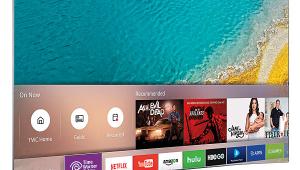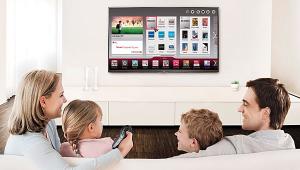How To Buy a 4K TV
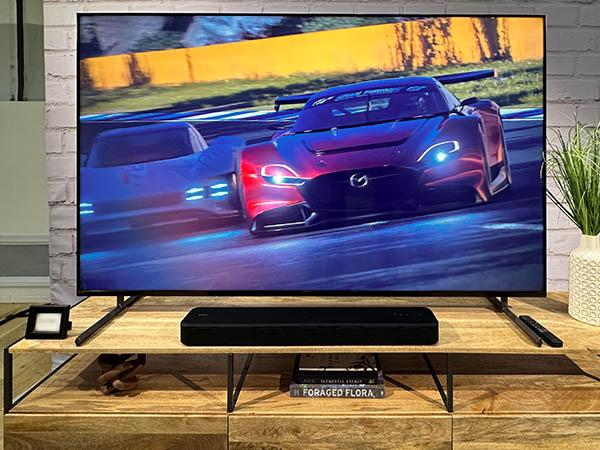
The good news is TVs have consistently bucked inflationary economic trends. Today's TVs are larger and offer higher performance for a lower price than ever. There's stiff competition between OLED and QLED (mini-LED FALD LCDs) and plenty of brands to choose from. Recently the cost of an 85-inch TV has dropped dramatically, with 97- and 98-inch models now commanding the size-related premium. And for sizes 100 inches and above, there's UST projectors to consider, some of which have built-in tuners and are sold as "Laser TVs."
Today's 4K TVs typically support at least HDMI 2.0a, but in some cases they incorporate HDMI 2.1, which allows for 120 Hz input with VRR (variable refresh rate) while 8K TVs typically use the HDMI 2.1 standard by default. Even with 4K, HDMI 2.1 is needed for the fullest compatibility with the latest gaming consoles like Xbox Series S/X or the PlayStation 5. Movie lovers have no need for such high frame rates but still benefit from the use of a 120 Hz panel, which can show 24 Hz cinematic material at a proper cadence, unlike 60 Hz panels.
Unlike many similar lists, we are not making specific purchase recommendations. The purpose of this article is to inform the uninitiated as to what aspects of a modern UHD TV's performance to focus on when making a purchase decision.
What About 8K?
8K is glorious excess, and while there are applications that can use the extra resolution, it's overkill for anything related to home viewing, movies, video games, etc. There's a valid argument to be made for 8K when displaying art or photos, any situation where the image does not move and the viewer might step up really close to the screen in order to see more detail. That's how we appreciate art in a gallery or museum, but it's definitely not how we watch TV or movies.
But that's not to say you should discount 8K TVs. You can definitely do cool things with them, like show multiple 4K sources on screen at once. And 8K TVs tend to be the flagship TVs in a company's lineup, in order to justify the premium they are typically high performers in other areas that are not explicitly related to pixel count, like sound capabilities, high zone counts in FALD models, top-notch image processing, and high contrast/peak brightness.
It's entirely possible you'd get some benefit from an 8K TV, but expectations need to be realistic, you are not going to be watching 8K movies anytime soon, and even 8K video games typically look better in 4K at a higher frame rate.
LCD, OLED or UST?
LED / mini-LEDThe most prevalent TV display technology, embraced by major and minor manufacturers alike, is LCD. It is what's known as a transmissive imaging technology, meaning there is a backlight and the image is achieved by selectively blocking that backlight.
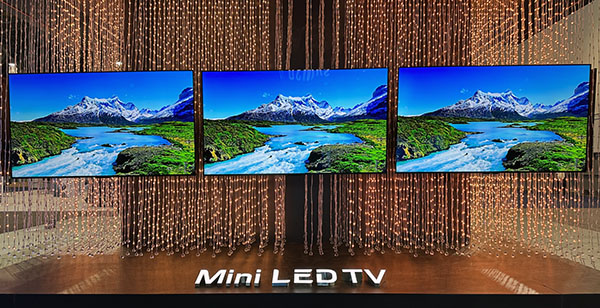
An attractive quality of LCD TVs is their affordability, with 65-inch Ultra HD models currently available for as low as $400 and premium mini-LED QLED models selling for under $1,000 at that size. And with LCD TVs you have options at just about any size from 32 inches (that can double as a PC monitor) all the way up to 98-inch monsters. At CES 2023 Hisense even showed a 110-inch TV that it says will ship to consumers.

LCD TVs can easily accommodate various scenarios such as enjoying sports in a brightly lit room. Simultaneously, many premium LCD TVs incorporate advanced backlight modulation technology like FALD (full array local dimming) to achieve deep black levels and higher contrast ratios—ideal for an immersive lights-out movie-watching experience.
There are two main types of LED backlights: edge-lit and full-array.
Full Array Local Dimming (FALD) is a technology used in LED/LCD displays to improve contrast and provide better image quality by controlling the backlighting in a more precise manner. It's particularly effective in 4K displays where higher resolutions can reveal greater details and benefit from improved contrast ratios.
In a FALD 4K backlight system, the following key components and processes work together to improve contrast:
• LED backlight array: Unlike edge-lit displays where LEDs are placed only along the edges of the screen, FALD displays have an array of LEDs distributed evenly across the entire back of the panel. This allows for more precise control over the brightness and dimming of individual sections of the screen.
• Local dimming zones: The LED backlight array is divided into multiple zones, each containing a group of LEDs. These zones can be independently controlled, allowing for localized adjustments in brightness levels.
• Light diffusion layer: A layer of material is placed between the LED backlight array and the LCD panel, diffusing the light emitted from the LEDs to create a more uniform distribution of light across the screen.
• Signal processing and control: The display controller receives video signal input and processes it to determine the appropriate brightness levels for each local dimming zone. The controller then adjusts the intensity of the LEDs in each zone accordingly.
• Improved contrast: Independently controlling the brightness of different zones allows for deeper blacks and brighter whites in the same image. This results in a higher contrast ratio, which enhances the overall image quality, making details more visible and improving the perception of depth.
LCD offers high brightness, high contrast potential, and affordability, but it has drawbacks. The primary issue is the limited viewing angle in models with VA display panels—which are common in high-end LCD sets—and poor native contrast with IPS (In-Plane Switching) panels.
VA (Vertical Alignment) panels have better contrast because the liquid crystals in the panel are aligned vertically. This means that they can block more light, which results in deeper blacks. IPS panels have a wider viewing angle because the liquid crystals in the panel are aligned in the same plane. IPS cannot achieve the same black depth and consequently have a much lower native contrast versus VA displays.
Among VA panel LCD TVs you'll find significant variation in native contrast (the contrast it can achieve without FALD's assistance). Typically the higher the native contrast, the narrower the viewing angle. The upshot is some very affordable TVs look fantastic but only if viewed head-on. A VA LCD panel with relatively wide viewing angles (but lower native contrast) has to lean more heavily on the local dimming so you'll usually find that sort of panel on premium mini-LED QLEDs that have hundreds or even thousands of local dimming zones.
The main thing to know is that LCD TV options span a wide range of prices and capabilities, from true entry level to bleeding-edge flagship TVs from top brands. An OLED is specifically better for movie lovers and dark room viewing, but a VA LCD with a mini-LED FALD array and QLED color is often the best compromise in size, price and performance.
What is a QLED TV?
QLED is a slightly confusing acronym that basically means an LED-lit LCD TV has a quantum-dot layer that improves its color gamut. Quantum dots are tiny semiconductor nanocrystals that can emit light of a specific color when they are excited by light of a different color. Ultimately the current manifestation of QLED is still a transmissive, edgelit or backlit TV with an LCD panel of some type, and not an alternative emissive technology to OLED. In the future we might see self-emissive QLED TVs (as opposed to QD OLED), but right now that's not a thing.
OLED
4K OLED TVs are an emissive display technology, where each pixel is its own light source. It offers several significant advantages over traditional LCD TVs making them an attractive choice for consumers seeking superior image quality. Some of the key advantages include:
• Deep, rich blacks: OLED TVs are capable of displaying deep blacks. This is because each pixel in the display can be individually turned on or off, allowing for true black representation when a pixel is switched off. This results in a higher contrast ratio, which enhances the overall image quality and provides a more immersive viewing experience.
• Infinite contrast ratio: The ability to display pure black also leads to an infinite contrast ratio in OLED TVs. This means that the difference between the darkest black and the brightest white is virtually limitless, providing a more vivid and realistic image with excellent shadow detail.
• Wide viewing angles: Since OLED pixels emit light directly and do not require a backlight, the viewing angle is significantly wider than that of LCD TVs. This means that the picture quality remains consistent in terms of contrast and color accuracy, regardless of the viewer's position in the room. OLED TVs are ideal for group viewing or rooms with multiple seating areas.
• Fast response times: OLED technology boasts fast response times due to the organic material's ability to change states rapidly in response to electric current. This results in smooth motion handling, minimal motion blur, and a more enjoyable experience when watching fast-paced content such as sports or action movies.
• Slim and lightweight design: OLED TVs are known for their incredibly thin and lightweight designs, thanks to the absence of a backlight and the use of flexible organic materials. This makes them easy to mount on a wall or place on a slim TV stand and achieve a sleek and modern look.
• Lower power consumption: Since each pixel in an OLED display generates its own light, the overall power consumption can be lower than that of a traditional LCD TV, especially when displaying darker content. This can result in energy savings and a reduced environmental impact.
The most common type of OLED TV is the WRGB type championed by LG and sold by numerous brands. It has a white pixel in addition to the RGB pixels, this lends it greater durability and a high peak brightness but is not as colorimetrically "perfect" as the new QD OLEDs (more on that below). Like LCDs, OLED TVs are available in a wide variety of sizes ranging from 42-inches to 97-inches.

Of course there are downsides to OLEDs, too. They cost more at a given size versus even a premium mini-LED LCD such as a QLED. OLEDs also lag behind some FALD LCDs when it comes to peak brightness, especially full-screen brightness which matters more for bright settings than rendering HDR in a dark room (a task where OLED is peerless). 2023 OLED models do exhibit considerably improved brightness versus OLEDs of the past and for many applications the technology is more than bright enough now.
OLED is also somewhat susceptible to burn-in and other pixel-wear related issues. But it is something that has improved over time even as OLEDs get brighter. OLED buyers should simply be aware that it's not a good idea to watch the same channel 24 hours a day, with the TV set at maximum brightness. In other words don't abuse your OLED and you will not have an issue.
Quantum Dot OLED
As of 2022, there's a new type of OLED to consider, quantum dot OLED. These TVs achieve extraordinary picture quality because they rely on just RGB emissive pixels. That means there's no white pixel in the mix. The upshot is QD OLEDs have a wider color gamut and even better off-axis performance than WRGB OLED TVs. But this capability does come at a cost, recent tests show that the RGB pixels may be more susceptible to wear and burn-in than WRGB designs that can lean on the white sub-pixel to achieve peak brightness.

The other limitation with QD OLED is size, it is currently only available in 55, 65, and 77-inch models from Samsung and Sony. But ultimately a QD OLED is cutting-edge TV technology you can buy today and it delivers an impeccable picture for those comfortable with early adoption.
Ultra-Short-Throw (UST) Projectors
Until recently there was not much overlap between projection and TVs. Projectors were for home theaters and basements and back yards, TVs were for living rooms and bedrooms and maybe an AV room focused on gaming. But ultra-short-throw (UST) projectors have emerged as a hybrid alternative, offering 100-inch, 120-inch and now 150-inch options featuring specialized ceiling light-rejecting screens that offer a viewable image with some ambient light and an almost home theater-like projected image when the room is dark.
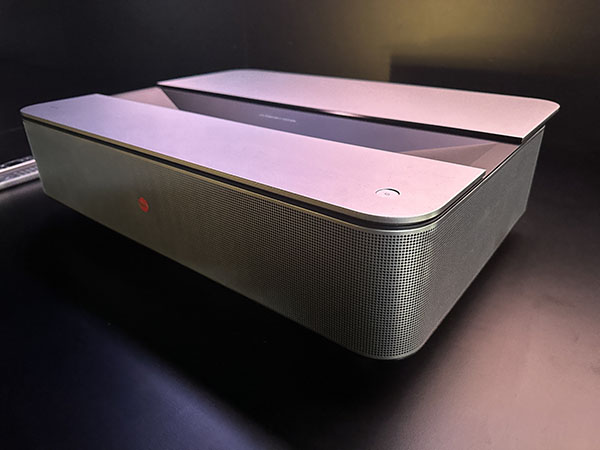
Notably, a UST cannot outperform a decent TV in terms of resolution, contrast, and bright room performance. It will also be more limited with HDR content than a premium FALD LCD or any OLED. But, what you get in return is a big picture that a TV cannot deliver. Although now that there are TV's in the 100-inch "class" it's really the 120-inch and 150-inch options that make the UST category interesting. These are screen sizes where TVs are impractical to handle and would be unaffordable, but with a UST projector the screen is assembled on site and the cost of going from 100 inches to 120 inches is not that high.
UST projection is best for a room with total light control, like a basement. If in a living room, plan to have shades down if you want to use it in the day.
There are some major benefits to UST projection, aside from screen size. The screens are much less reflective than TV screens, so they don't act as a giant mirror. This somewhat counteracts the lower brightness when compared with a TV image: though the TV image looks cleaner under mixed lighting, that lighting can create reflections.
It is the performance of the best USTs in a dark room that makes the category interesting. There are super-bright RGB triple-laser options that cover the rec.2020 color space, which is the widest supported by any HDR format. You only really need to cover the more narrow DCI/P3 color space to "do HDR right." But there are times you can see the richness of the colors in the RGB laser models and that vibrancy is seductive.
Another interesting quality of some UST projectors is support for 3D, which is no longer a thing with TVs. But there are still movies released on 3D Blu-ray and a back catalog that makes it an interesting genre of sorts. And compatible UST projectors are one way to continue enjoying it.
Still, a UST projector is by no means cheap. Today's 85-inch TVs typically cost less than a good UST plus screen, so you really need to be prioritizing size over picture quality to go that route.
